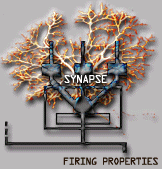 DANGER RELATED STEPS TOWARDS P-CONSCIOUSNESS.
DANGER RELATED STEPS TOWARDS P-CONSCIOUSNESS. DANGER RELATED STEPS TOWARDS P-CONSCIOUSNESS.
DANGER RELATED STEPS TOWARDS P-CONSCIOUSNESS.
Shannon's theory introduces the notion of a surprise level related to some uncommon configurations among a physical flow of events, just as a sensory alarm links to unexpected predator signs among a psychophysical information flow. Adding to Chalmers we put more weight on sensitivity to alarming conditions than on its evolutive consequences: oriented awareness, access-consciousness and phenomenal conscious experiences.
We are studying the relations among danger perception, neural alarm networks, aim-oriented awareness and both A- and P- types of consciousness, following Schacter's model, as made clear after a few paragraphs. We may argue about a physical-psychophysical theory of evolutive phase transitions that gave rise (among animals with neural nets in a risky world)
1) to a quite useful increasing sensitivity to danger perception, and as a consequence,
2) to A-consciousness,
3) to awareness, and
4) to hard-to-explain P-conscious experience.
The serial consequences when evolving from 1) to 4), may be interpreted as automatic consequences - given enough complexity, non equilibrium conditions, and time for mutations - of the more fundamental process, in this case the capacity for natural perceptions to diminish dangerous and to increase advantageous events. The entire discussion has a hard part (Chalmers' hard problem revisited): can this be automatic or not? Is there a hard-to-explain important transition of phase when experience, and experience to feel experienced, overrides a previous world where danger as an experience is not a physical necessity?
Danger felt as an experience is not the same as danger mecanically avoided by stochastic DNA mutations, but the two may be related with the help of physical laws.
NEXT
OTHER
2.feb.1999
Pulsar tecla de vuelta
Glosario de Carlos von der Becke.